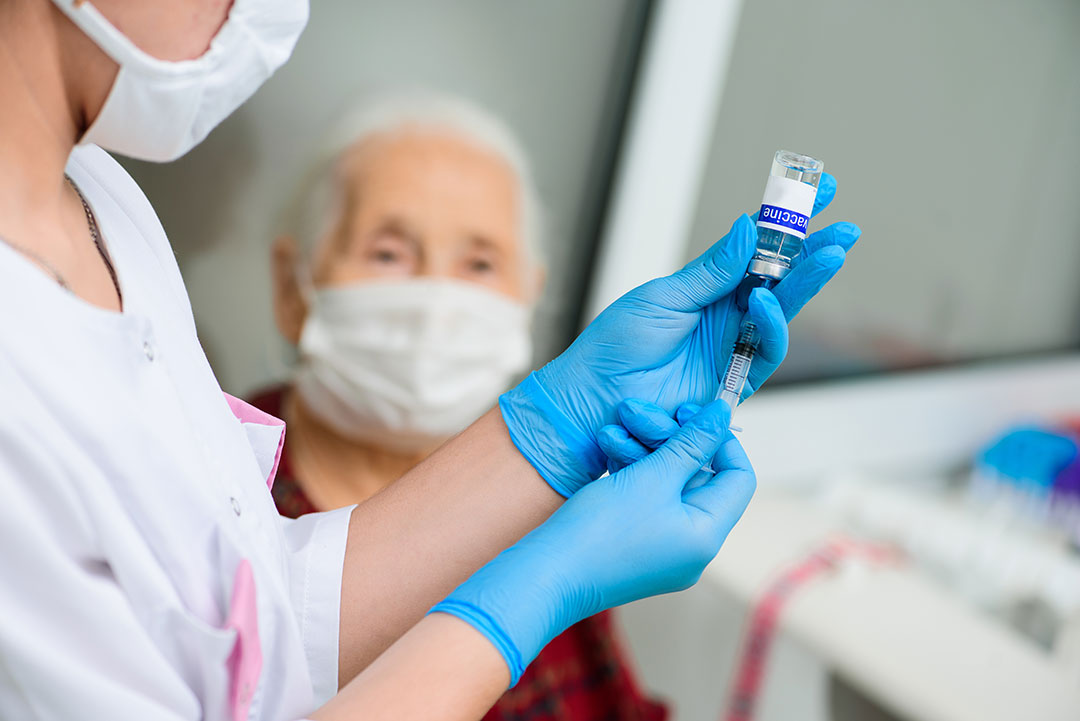Will COVID-19 evolve to be more or less deadly?
Some viruses gradually become less virulent over time, but there's no guarantee that SARS-CoV-2 will follow that pattern.
- 14 July 2021
- 4 min read
- by Linda Geddes

Scientists frequently warn about how any delay in mass vaccination against COVID-19 risks the emergence of potentially more dangerous variants. But historically, other viruses have evolved to become less dangerous. So, what are the evolutionary forces that shape the destiny of a virus?
Our current understanding of how a pathogen’s virulence – its ability to cause damage in the host it infects – changes over time, is limited. But since the objective of viruses such as SARS-CoV-2 is to create as many copies of themselves and spread as widely as possible, from an evolutionary perspective it is not in the interest of a virus to harm the host they depend on for survival. Theoretically, a highly successful virus would be one that managed to combine fast replication with a long period of infectiousness, during which its host was well enough to mingle with lots of other hosts that these new viral particles could transmit to.
Past pandemics
There are historic examples of viruses which gradually became less dangerous over time, such as the H1N1 influenza viruses responsible for the 1918 “Spanish flu” and 2009 “swine flu” pandemics, and the myxoma virus that causes myxomatosis in rabbits. OC43, a human coronavirus that causes the common cold, is also believed to have started out as a more deadly coronavirus; it may have been responsible for a pandemic that began in 1890, which killed more than a million people worldwide.
Have you read?
If we’re lucky, SARS-CoV-2 may go the same way. However, the evidence to date is somewhat dispiriting. One study estimated that the death rate associated with the highly transmissible Alpha variant, which was first detected in Kent, England, in December, was up to 64% higher, compared to previous variants. And, although it’s still too early to say whether the Delta variant is more deadly, it appears to be both more transmissible and more likely to result in hospitalisation if you’re infected with it, compared to the Alpha variant.
Viral interest
The trouble is that how easily a virus transmits from one host to another doesn’t necessarily correlate with how sick it makes its host. Take the bacterium that causes cholera for example, which needs people to get sick – often deadly sick – before it can spread, principally through diarrhoea. Respiratory viruses need people to be close enough to be breathing the same air, to be transmitted to a new host, but don’t necessarily need them to be sick. SARS-CoV-2 is thought to be most infectious shortly before and during the first few days after people develop symptoms. The most severe COVID-19 symptoms don’t tend to develop until the second week of the infection, by which time most of the active virus has been neutralised by the body’s immune response. Indeed, the catastrophic organ failure and breathing difficulties experienced by people with severe COVID-19, are largely driven by an overactive immune response to the virus, rather than by the virus attempting to transmit itself to a new host.
So, unless SARS-CoV-2 becomes so virulent that it causes people to become severely ill and self-isolate before they transmit the virus to other people, there is no pressure on it to become less deadly.
Pandemic burnout
What could stop this virus in its tracks is if enough people become immune to it. This could happen because enough people become infected for herd immunity to develop. But infection doesn’t always lead to full immunity and people can be reinfected with new variants, as we’ve already seen during this pandemic. Alternatively, COVID-19 vaccines might enable us to outpace the virus. Even though they don’t fully protect against infection, they could provide the firebreak that’s needed to extinguish COVID-19 outbreaks. But for that to happen, they need to be rolled out quickly, and to as many people as possible.









